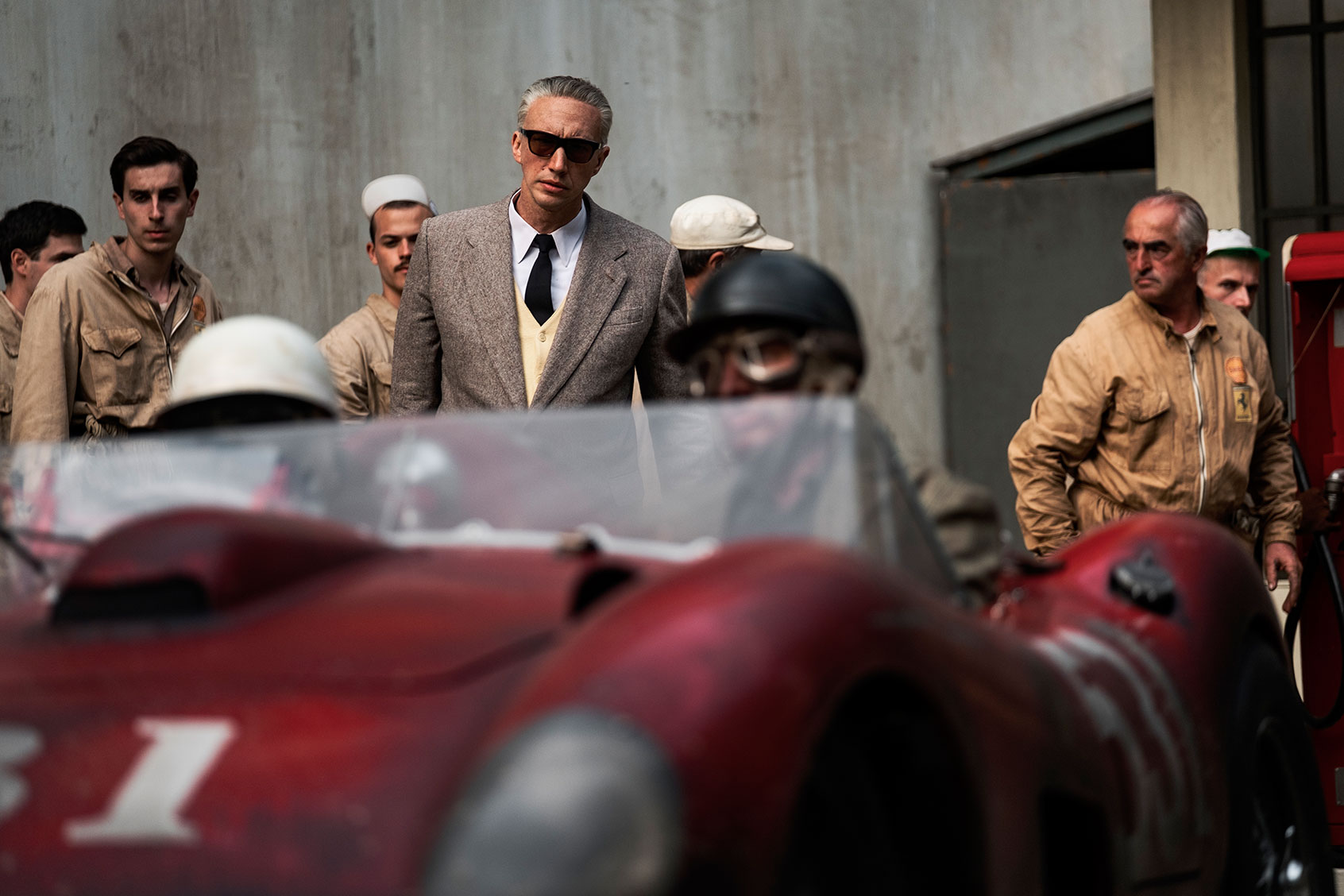Director Michael Mann’s ambitious biopic, “Ferrari,” takes place in 1957, when Enzo Ferrari (Adam Driver) is having a series of personal and professional crises. But as the film juggles its various storylines, viewers may learn more about how an engine works than what drives Ferrari — other than his basic needs for love and money. Mann’s film is as flat as a punctured tire.
An early episode sets the uneven tone. Enzo’s wife, Laura (Penélope Cruz) pulls a gun on her husband and fires it, deliberately missing him. She is angry that he is cheating on her and not adhering to an agreement they had for him to be home in the morning. The scene is over-dramatic and comes off as more risible than powerful.
Laura’s anger is justified as she controls half the company, which is on the brink of financial ruin. Enzo, however, is trying to finagle a deal to buy her out. In the process, she discovers his affair with Lina Lardi (Shailene Woodley, delivering a terrible Italian accent). Watching Laura piece things together is saved from being humdrum because of Cruz’s feisty performance. She may sport a perpetual scowl, but Cruz is fun to watch as she skulks through “Ferrari.”
The same cannot be said for Driver, who also does a lot of skulking. Driver does not seem to embody Ferrari here, and only has a passing resemblance to the entrepreneur. He acts subdued as Enzo tries to be cool as a cucumber, but he has a palpable internal anxiety. Driver conveys some of that, but much of it is told not shown. Enzo is haunted by the early death of the son he had with Laura — there is an ongoing blame game — yet an early, tearful scene by the youth’s grave is unmoving.
“Ferrari” does pick up speed during the racing scenes . . . and give viewers the “you are there” thrill.
Enzo is likely masking his real emotions by his need to have total control, which is why he yells at his drivers when they lose, and yells at journalists who disappoint him with their coverage. He even pushes a woman, Linda Christian (Sarah Gadon), out from in front of his car’s logo to get the Ferrari emblem in a photograph. It might be the film’s most revealing moment.
Enzo professes his love for Lina, but his relationship with their son Piero (Giuseppe Festinese), feels stronger. Enzo has not recognized Piero yet, much to Lina’s chagrin. Laura specifically asks him not to, as a condition for the money he needs. This love triangle plays out in ways that never generate much emotion. A title card before the credits provides more insight than the scenes depicting the issues.
Mann’s film, written by Troy Kennedy Martin, and based on Brock Yates’ book, “Enzo Ferrari; The Man, the Cars, the Races” never makes Ferrari interesting, which is its fatal flaw. While Enzo is a toxic man who may not engender sympathy, it is easy to root for his drivers, especially the charismatic Alfonso De Portago (Gabriel Leone), who gets on Ferrari’s team after the untimely death of one of the racers. The other racers, which include Peter Collins (Jack O’Connell) and Piero Taruffi (Patrick Dempsey), are underdeveloped. Ferrari desperately needs to win the upcoming Mille Miglia race to stay afloat financially, which is why he makes a deal with Laura for a share of the company.
There is a line Enzo has in the film that racing is a “deadly passion, a terrible joy,” but much of “Ferrari” fails to generate much passion.
“Ferrari” does pick up speed during the racing scenes, which are shot at high speed, by cinematographer Erik Messerschmidt, and give viewers the “you are there” thrill. The scenes of cars jockeying for position are exciting, and there are a few accidents — one in particular is especially fatal. Mann emphasizes the impact of the race as much as the race itself, which is important; for viewers who do not know the history, the results are complicated. But what happens generates a rushed ending, and another title card answers a big question raised by what transpired in the race.
“Ferrari” constantly feels like it is underperforming. The film features stylish costumes and cars, but what period film about Ferrari in the 1950s would not look gorgeous? Mann’s direction can be solid during the big racing scenes, but it is shakier when he crosscuts between Ferrari in church while a racer is testing a car on the track. The editing here is meant to build tension, but it only draws out a tragedy that has been unsubtly telegraphed.
There is a line Enzo has in the film that racing is a “deadly passion, a terrible joy,” but much of “Ferrari” fails to generate much passion. Enzo impulsively makes love to Laura in a curious scene that is supposed to re-cement their bond. In contrast, Alfonso’s cuddling with his girlfriend Linda Christian, is far more appealing.
If Mann has affection for Ferrari, he mutes it. It is wise that “Ferrari” covers only a discrete part of its subject’s life. Unfortunately, the film, like its protagonist, is stuck in second gear.
“Ferrari” opens Christmas Day in theaters nationwide
Read more
movie reviews by Gary Kramer

